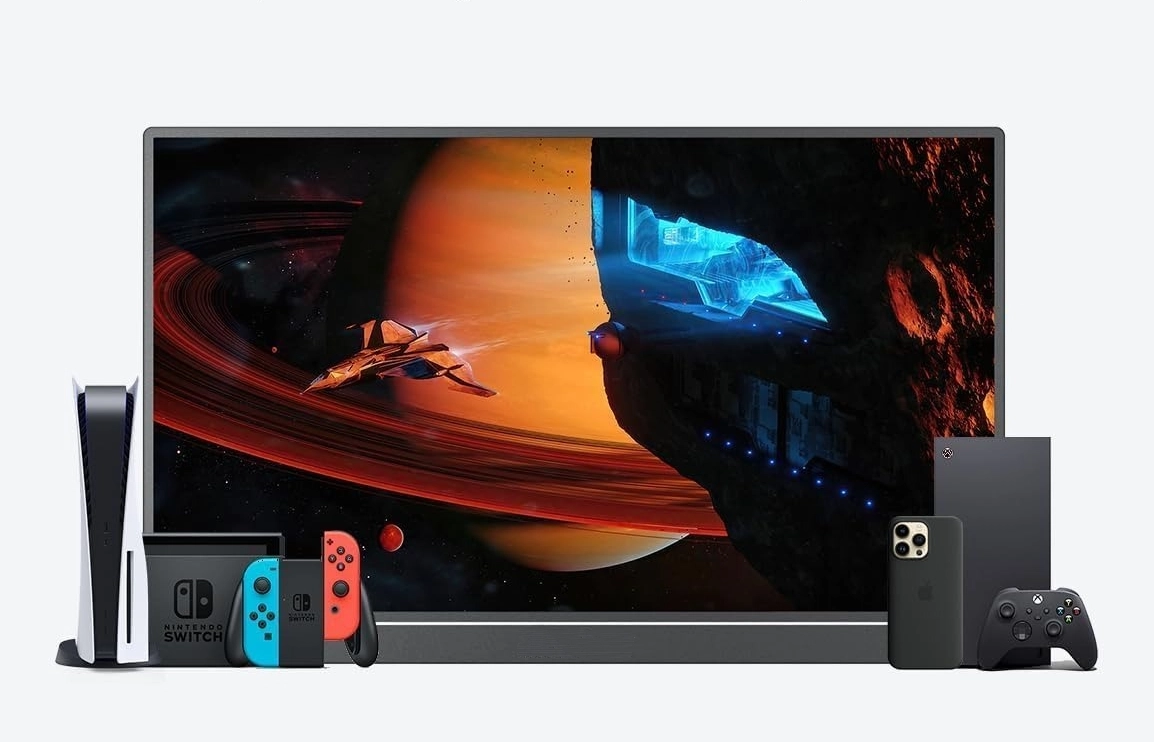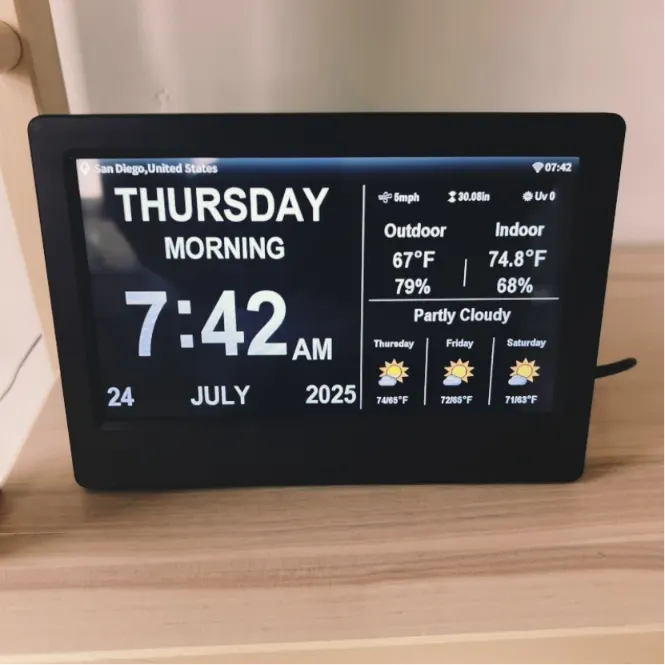
Key Causes behind the semiconductor supply crisis
The chip shortage like a perfect storm hitting the tech world. Back when COVID-19 locked everything down, factories in places like Taiwan and South Korea got slammed. Workers couldn’t show up, and production tanked. Plus, everybody started buying laptops and tablets for working from home or binge-watching shows, so demand went nuts. Geopolitical drama, like U.S.-China trade fights, made things worse with bans and restrictions messing up chip flow. Oh, and don’t forget natural disasters—fires in Japanese chip plants and droughts in Taiwan dried up supply even more.
Most companies were all about that “just-in-time” inventory vibe—zero extra stock. When demand spiked, they couldn’t keep up. It’s a wild combo of bad luck and crazy demand that’s got chip makers scrambling.
How the Chip Shortage Disrupts Production of Portable Digital Displays
Portable digital displays need chips like nobody’s business—stuff like display drivers, touch controllers, processors, and power chips. No chips, no production. Factories just sit there, or companies gotta swap in random parts, which means redesigning everything. Total hassle.
Unlike big ol’ monitors, portable screens are built for bouncing around—perfect for peeps working anywhere or needing a second screen with their laptop. These babies need super specific chips to keep things light, powerful, and battery-friendly. If those chips are MIA, makers gotta pick between size, battery life, or cool features, and that’s a tough call.
The Ripple Effect on Delivery Times, Costs, and Customer Expectations
No chips means waiting forever. Stuff that took weeks now takes months—sometimes way longer. Companies pay crazy shipping fees when parts finally show up or lose cash keeping idle factories running.
Customers get mad when their portable monitors don’t arrive quick. They’re used to fast delivery, and now it’s all delays and “out of stock” signs. Plus, chip prices are through the roof, so displays cost more. In a world where portable touch screen monitors are all about easy vibes, letting peeps down can wreck a brand’s rep.
Strategic Procurement Approaches for Portable Digital Display Enterprises
Building Long-Term Relationships with Reliable Chip Suppliers
Gotta get tight with solid chip suppliers. Go deep into long-term collaboration and plan your production schedule early so that when chips are in short supply, you can supply them on time.Having a good relationship with your suppliers means they’ll let you know about shortages or delays, so you can plan ahead rather than panic.
Diversifying the Supply Chain to Reduce Dependency Risks
Betting on one supplier or one country? Bad move. Spread your bets across diff places—think North America, Europe, or Southeast Asia. That way, if one spot goes down, you’re not toast. Diversify logistics and backup parts too, so your whole chain doesn’t crash.
Rational use of inventory and inventory forecasting
Forget super-lean inventories. Stock up on must-have chips like microcontrollers or display drivers. Use smart tech—predictive analytics—to guess what you’ll need based on past sales and market trends. It’s like having a crystal ball to dodge shortages and keep things rolling.

Independent innovation to ease chip supply constraints
Compatible with multiple chipset flexible architecture design
Make your designs chill with diff chipsets. Build modular systems with standard plugs so you can swap parts without rebuilding the whole dang thing. If your go-to chip’s gone, you can slide in another and keep production moving.
Prioritizing Core Features in Portable Digital Displays During Redesign
When chips are short, focus on what peeps love most—crisp screens, long battery life, or easy-to-carry vibes. A portable touch screen monitor’s all about being a dope second screen anywhere. Cut fancy extras if you gotta, but keep the main stuff that makes it awesome.
Collaborating with R&D Teams to Accelerate Adaptive Engineering
Get your procurement crew and R&D peeps working like besties. Fast teamwork lets you tweak designs quick when chips change. Agile engineering means you’re not stuck waiting forever to launch new gear, even when the chip game’s rough.
Exploring Alternative Technologies and Components
Evaluating Substitute Chips Without Compromising Performance
Substitute chips can save the day, but you gotta test them hard. They might use diff power or fit weird, so run real-world checks to make sure they don’t mess up your display’s vibe. Simulation tools can spot issues early, so you don’t end up with junky products.
The Role of Open-Source Hardware in Reducing Supply Pressure
Open-source hardware’s super dope. Platforms like Arduino or Raspberry Pi share all the deets on what parts work. You get tons of supplier options without being stuck with one brand’s chips. It’s like a big community helping you keep production humming.
Opportunities in Localized Component Sourcing
Grab chips closer to home to dodge shipping drama or geopolitics. Local suppliers mean faster delivery and less stress from customs or bans. Plus, you’re boosting nearby businesses, which is a total win during crazy times like these.
Enhancing Production Efficiency Amid Component Shortages
Implementing Lean Manufacturing Practices in Display Assembly Lines
Lean manufacturing’s the way to go. Cut out dumb steps that waste time or parts. Use tricks like kanban boards to keep things tight, so every chip you got gets max action, even when you’re running low.
Simplify bill of materials (BOM) to improve efficiency
Keep your BOM simple, yo. Use standard parts across all your products so you’re not stuck hunting rare chips. If one part’s gone, you can swap in another without redesigning everything. Saves time and cash on portable display lines.
Using Predictive Analytics to Optimize Production Schedules
Predictive analytics are like a cheat code. They crunch old sales data and market signals to guess what’s coming. You can stock up or tweak production before shortages hit. Intelligent scheduling keeps your factories running smoothly.
Common questions (FAQs)
- How does the chip shortage affectportable digital displays?
No chips, no displays. Shortages of drivers and processors slow production and jack up costs, leaving stores empty and customers waiting. - Can alternative chips be used without affecting performance?
Yup, but test themlike crazy first. Diff chips might mess with power or connections, so check they work IRL before building tons. - What strategies help manufacturers adapt during semiconductor shortages?
Spread suppliers across regions, design flexible gear, use analytics to predict needs, simplify BOMs, stockpile key parts, and team up tight with R&D.
Need next-level portable monitor solutions? Shenzhen Yijing Technology Co., Ltd.’s got you with their 15.6” Portable External Display and pro OEM/ODM services. Over 15 years of know-how! Check out YIAISIGN’s slick R&D for your next big project—hit them up!


